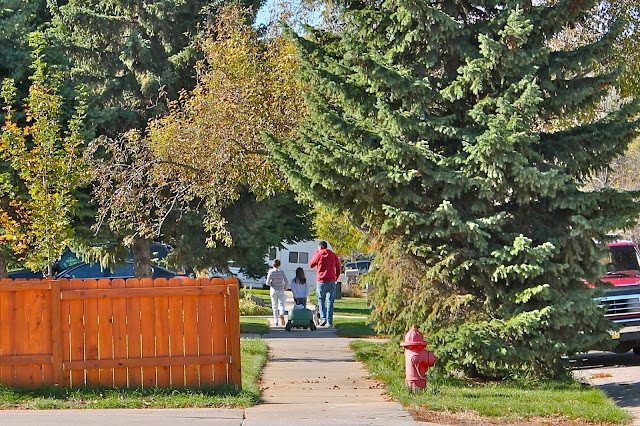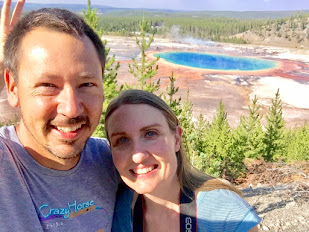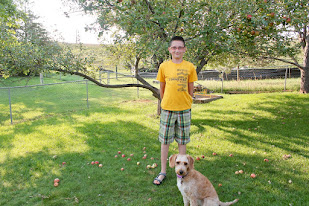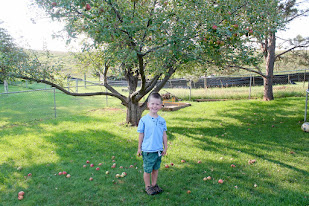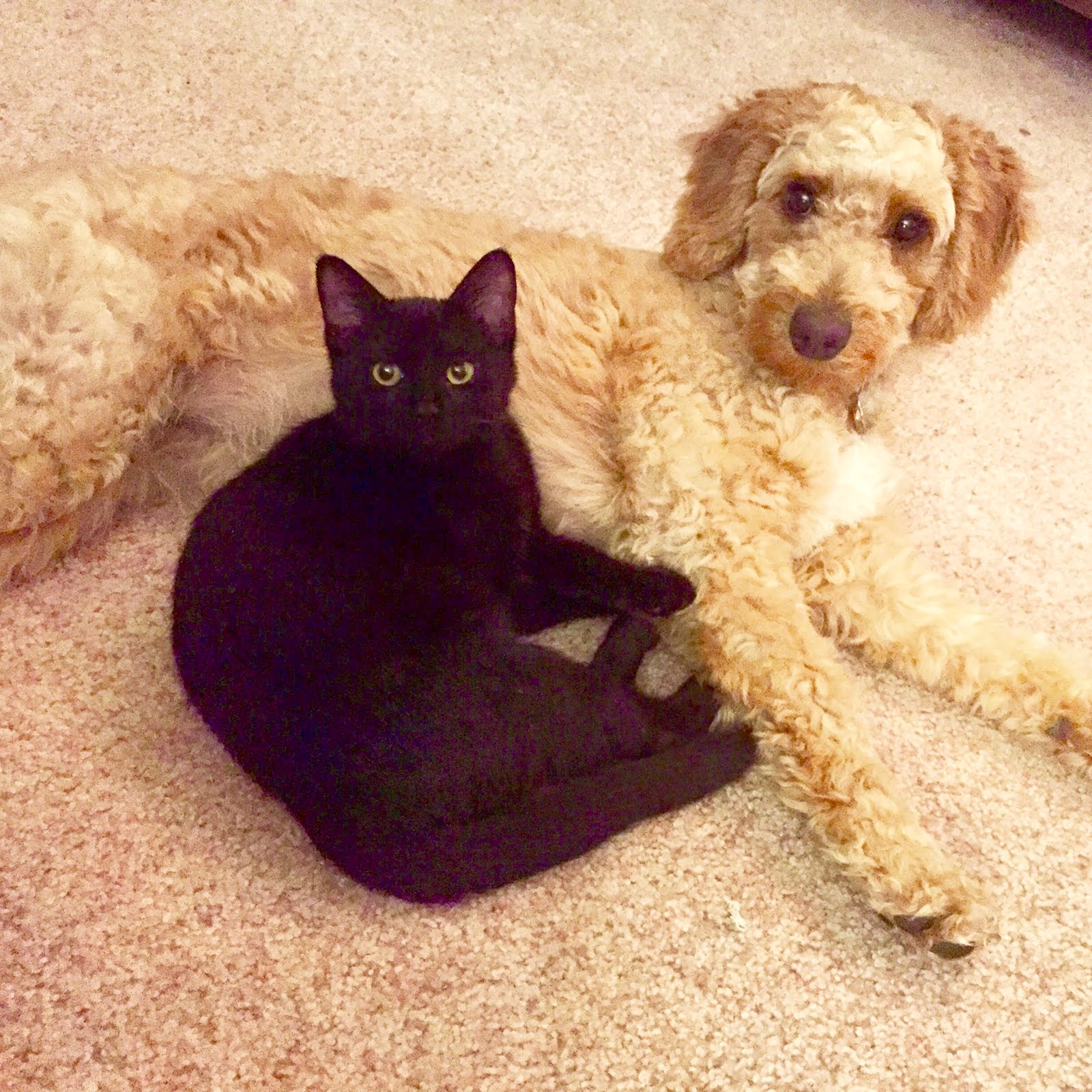I have just now finally competed this book that I started four years ago,
How Harry Cast His Spell by John Granger. Since I learned so much from it, I thought I'd do my very own (lengthy) book report so I could remember and share my thoughts. Hey, Noah was very impressed that I was summarizing an entire book since he has to do that on a much smaller scale every day for homeschool. Gotta take my own medicine.
I'll just start by
reiterating that I'm a sci-fi geek. I was brought up on Star Wars and Star Trek but it was The Lord of the Rings (LOTR) trilogy that stole my heart. I love those books to the moon and back. I have them on CD/audiobook and have listened to them countless times...or at least ten to twenty. Seriously.
On our honeymoon, one night we went to a movie theater in Kauai and saw Harry Potter and the Prisoner of Azkaban. I don't think I knew much about Harry Potter back then, but I loved it. I remember coming home and renting the first two movies to see what I'd missed. Then of course I
had to read the books. That was 2004 and by 2005 I was reading them on a trip Terry and I took to Chicago for a friend's wedding. I remember when I got home I was on the final book that had been lately released, number 6, The Half Blood Prince, and I was was crying in our old house and going outside to tell an uninterested Terry what had happened to Dumbledore. In 2007 we moved to Gothenburg, NE and that summer the much awaited final book came out. Terry was going on a week long trip and since I was homesick I drove home with our only child, little Noah, to Rapid City. I spent most of my time reading The Deathly Hallows. It was so so good. Not as impacting as LOTR, but still amazing. And here I am eight years later, still in love with the story. And I've learned that there is much meat and depth to this book - much more than I realized.
So many people (mostly Christians) misunderstand and mischaracterize these books. They think they are evil. When in fact they are so far from evil it's ridiculous. And most of these people have never read the books so have no good reason to hold the opinion that they do. They don't know all of the rich Christian symbolism there is in the books and how much there is to aspire to there. So, again, I thought I'd write some of it down.
I tried back in 2011 but had the wrong book. I bought the correct, updated version that covers all seven Harry Potter books and was illumined by a great deal that I couldn't see on my own. I will say that I think the author, John Granger, stretches the symbolism to a breaking point several times. But for the most part it's very sound and hard to argue with.
If you want to read what I summarized from
the Introduction and
First Chapter of the book, just click on those blue links. All that I'll add is to reiterate why the magic in Harry Potter is not evil, since that's what most people have a problem with (read in full from
Chapter One). Here is what a friend said several years ago, "...
for all the complaining christians do (who usually have not even read it) about how we should beware involving ourselves in witchcraft, they seem to miss the mark almost entirely. Reading with discernment is important in anything you read, we should never stop thinking and discerning, but the magic is a plot device, a motif, just as Narnia is, to teach us about our real world by taking us up out of it. We all need to be discerning, and no one "has" to read the books- but anyone warning emphatically against them who HASN'T read them through needs to keep in mind, for all their opinions, in the end, they actually don't REALLY know what it's about."
The magic in Harry Potter is not presented as an invocational, which is sorcery, the kind the Bible forbids, where you call on demons to use their power. Rather, the magic in Harry Potter is like what is in Tolkien's LOTR and Lewis' Narnia - Incantational. The characters are born with magical ability, as we are born with certain talents, and if we are regenerate we have spiritual giftings The Harry Potter characters (and us!) use these gifts for good or evil. The books are not about magic. The magic is just a
plot device, a way to tell a story about making good choices, choosing correct beliefs, courage, good versus evil, love and death.
The author of the Harry Potter series, J. K. Rowling, attended an Anglican Communion church when she was young even though her family did not, is trained and educated in classical and modern languages and literature, and studied "alchemy" to give the story it's "magical parameters," which is essentially spiritual formation. Her stories are written within the English tradition which is almost entirely Christian - twelve centuries of it. She is not writing from a Islamic or Hinduism worldview, but from the English literary tradition. "Christian authors writing for a Christian reading audience - and writing books, plays, and poems that would edify them in their spiritual and workaday lives as Christians - was the rule of English letter until well after the first World War. In explaining the popularity of the Harry Potter novels as a function of the response of a spiritually deprived world for edifying, transcendent experience (even experience limited to entertainment), I am frequently accused of proselytizing and forcing Christian meaning into the text. What a hoot! No one accuses my friends who are Saudi scholars of trying to convert people to Islam because their reports on Middle Eastern current events and trends are heavy on the place of Islam in Arabic culture." Rowling is writing in the traditional English literary tradition, which is Christian.
Starting off again in Chapter Two, the book is primarily a story of
good versus evil. All the important characters have opposites to highlight that they are opposing sides. Harry Potter v. Draco Malfoy, James Potter v. Lucius Malfoy, Dumbledore (Order of the Phoenix, Fawkes the Phoenix) v. Voldemort (Death Eaters, Nagini the snake), Gryffindor (Sword of Gryffindor, sorting hat) v. Slytherin (Basilisk, Chamber of Secrets). All of these characters fighting against each other represent the battle between good and evil, even the ultimate cosmic battle of Christ versus Satan. The meanings of theses names support this division. Godric means "godly" or "worshipful" and Gryffindor is French for "golden griffin," a traditional symbol of Christ - half eagle and half lion, king of heaven and earth. The symbol for the Gryffindors is a red lion, a hat tip to Lewis' Aslan. The phoenix is known as the resurrection bird and thus is a symbol of Christ. All the snake imagery is akin to Satan the serpent. Death Eaters are in opposition to those who eat the body and blood of Christ. Rowling "wants us rooting for the King of Heaven and earth...'Children need more than a set of virtues to emulate, values to choose, rules to obey, or even some higher form of reasoning to attain. They long to be part of a cosmic struggle between good and evil [ahem, that's why every good story is about good versus evil]. And that's why children want to read Harry Potter.'"
Chapter Three addresses the monomyth formula, or
hero's journey, which is the theme that the series follow of
love conquering death "and that we will rise from the dead in a resurrection made possible by and in Christ." Every book follows the same formula: Harry begins at Privet Drive, he escapes to Hogworts from his living death via magic, he arrives at Hogwarts and finds strange things happening, Harry solves the mystery with Ron and Hermione, he descends into the earth to face a crisis, Harry fights Voldemort and one of his servants, "he dies a figurative death, rises from the battlefield with the miraculous help of a Christ figure and returns to the land of the living," Harry learns from Dumbledore that a bad guy is a good guy and vice versa, he leaves from Platform 9 and 3/4s to go back to the Dursley's. In book #1 Harry's descent into the underground and a figurative death includes passing out from Quirrell's attack and is then saved by the Christ figure of his mother's sacrificial love and the Stone, rising three days later like Christ. In book #2 Riddle taunts Harry that he's dead after the Basilisk bites him and then Fawkes the phoenix rescues him. In #3 he passes out before a Dementor almost kisses him before the white stag Patronus chases the dementors away. In #4 Harry is among the dead in a graveyard when the phoenix song saves him. In #5 he believes he is dying when Voldemort possesses him in and his love for Sirius, Ron, and Hermione drive Voldemort out. In #6 Harry is drug into the dark lake by the Inferi before Dumbledore saves him with fire and is also rescued from Snape by Buckbeak. And though #7 breaks from this formula it keeps the elements intact. Harry goes underground several times - the Ministry of Magic, Malfoy Manor's dungeon, beneath Gringotts Bank. All of these trips underground were "followed by resurrections from the dead in the presence of a symbol of Christ...[a] foreshadowing for Harry's sacrifice at the end of Deathly Hallows and his rising from the dead to defeat Voldemort - literally from King's Cross -
as a symbol of Christ himself."
Chapter Four addressed
The Alchemy of Spiritual Growth. I had no idea what this was about, but since Rowling "read a ridiculous amount" about alchemy before writing the books, it's important. First off, alchemy was the first medieval chemistry/voodoo where a base (lead) metal was supposed transformed into gold. It's symbolism now means
magical transformation, personal change, spiritual growth. This device was used by Shakespeare, poets Donne and Eliot, Lewis, Tolkien, Chaucer and Joyce. In the Harry Potter books this corresponds to Harry's spiritual growth or character changing from lead to gold. Book #1 begins with Harry living in fear and by the end he is a champion of courage and daring. In #2 he is a prisoner and consumed by self-pity and doubt but by the end he risks his life to save Ginny and vanquish the villain (who is full of selfishness and self-importance). In #3 Harry blows up his aunt for insulting his mother but by the end he rescues and shields the man who actually betrayed his parents. In #4 he is obsessed with what others think of him but after facing all his trials he can shrug off negativity. In #5 Harry is obsessed with outward news and by the end he is secure in himself. In #6 he begins in doubt of Dumbledore's arrival but by the end he is prepared to take on Dumbledore's mission. In #7 Harry is paralyzed by doubts about Dumbledore before he chooses to believe in him anyway and is transformed into the Christ figure who rises from King's Cross, vanquisher of "his internal failings and the external evil of Voldemort."
This purification work is accomplished by sulfur (red) and mercury (silver), which are represented by Ron and Hermione, the quarreling couple, which transform Harry from lead to gold. This work has three stages; nigredo/black, albedo/white, and rubedo/red. The nigredo/black is the part of the story where Harry is broken down, putrefied and dissolved and takes place at Privet Drive or Snape's classroom. In the albedo/white stage, Harry is purified, represented by white or water (albus = white, resplendent, Lily, Luna = moon) in the presence of Dumbledore and usually without Ron and Hermione. The rubedo/red stage stands for perfection and is the climactic crucible which takes place underground or in a graveyard where "Harry dies a figurative death and is saved by love in the presence of a Christological symbol." The resurrection is the culmination of each year's work of transformation or alchemy.
Chapter Five has to do with
Doppelgangers, wherein one person has two natures. I didn't get as much out of this chapter. Pretty much each character has a shadow or hidden aspect to their person. Each character's animagi reveals more about person - Peter Pettigrew is a rat, Rite Skeeter is a bug, etc. The character's patronus shape also indicates who they are - Harry's is a white stag as was his father's, Lily's was a doe, as was Snape's, both of which are Christ symbols. There are half-breeds, shape-changers, polyjuice potion transformations and two-in-one persons like Harry and Voldemort being bound together.
Chapter Six covers the
themes the books address - "How are we to treat each other?; What is the answer for the mystery of death?; When are we to embrace or flee change?; and What makes a human being good or bad, or even human? Every character has prejudice against someone or some group - Ron against giants, werewolves and house elves; Harry against Snape; Snape against Harry; Slytherins versus everyone; Lies and prejudice spread by the Ministry; Eugenics; The readers prejudicing Snape. The answer to prejudice is love.
Chapter Seven addresses one of the primary themes of Harry Potter -
love trumping death, especially sacrificial love. In fact Rowling stated that "...death and bereavement and what death means, I would say, is one of the central themes in all seven books." In book #1 Harry learns his mother died to save him and it is this love that Voldemort cannot understand. Harry is still protected by his mother's love. In book #2 when Harry is attacked by the basilisk Harry is rescued from death through his loyalty to Dumbledore thus teaching us how to escape death through love. In book #3 Harry learns that those who love us live on like "the great cloud of witnesses" from Hebrews 12:1, etc. Skipping some here. In book #6 Dumbledore gives an example of a good death - he's heroic, merciful, selfless, fearless and sacrificial, all of which are Christlike standards. Furthermore, Rowling plainly believes in life after death as evidenced by Sirius passing through the veil, King's Cross, etc. Voldemort chooses to save himself from death through self-focused evil means whereas Harry chooses the good. Lily's blood becomes Harry's refuge as Christ's is ours. In Deathly Hallows there are two Bible verses on gravestones that "epitomize the whole series" according to Rowling - "Where your treasure is, there will your heart will be also," and "The last enemy to be destroyed is death." Also "Harry offers his life as a sacrificial lamb to defeat the Evil One, and he walks the Via Dolorosa into the Forbidden Forest in the company of his mother and trinity of friends. He winds up at King's Cross but returns to the Forest, where Narcissa's 'nails pierced him.' He feigns death but reveals himself at the rising of the sun and vanquishes the Dark Lord with the truth, with an invitation to repentance, and by turning his own death curse upon himself."
Chapter Eight was all about
what constitutes good choosing and was probably my favorite chapter. Every character makes choices of one kind of another and we learn which are the right kind. "Harry's choices deliver the implicit message, 'Do the hard, right thing; don't take the easy advantageous route.'" Dumbledore tells Harry, "'It is our choices Harry that show who we truly are, far more than our abilities...' In her treatment of choice Rowling engages us not in the choosing per se (as it was when 'dying' with Harry) but in
the goodness we experience as we choose the harder, virtuous, self-sacrificing option with Harry. C. S. Lewis called this
'training in the Stock Responses' and thought it the responsibility of the better writer. Rowling stands with Lewis in using her art to assist our growth in virtue. And her readers like that. A lot. We participate imaginatively with the characters when they make good choices - and this reading experience positively influences the decision making in our own lives. Sort of like vitamins for the soul."
Though there is free will in the books, there also is an aspect of destiny. I had never realized there were King Arthur references in the books, which is something we've learned a bit about in homeschool (because of course I didn't learn about that in my public school experience). Harry and Arthur are both orphans, hidden and protected by grand wizards. The magical sky ceiling in the Great Hall is an exact copy of the enchanted ceiling above the Round Table. And as Arthur pulls the sword from the stone to prove he is the rightful heir, Harry pulls the sword of Gryffindor from the Sorting Hat in Chamber. Also Ginny's full name, Ginevra is a variant of Guinevere. However, though Harry has a destiny, it's is his freewill choices which make the difference between living up to his prophesied end or not. And of course he makes all the right choices and is a proper hero to look up to.
Chapter Nine covered
symbolism so there was a lot involved. "If there is a single giveaway of the transcendent and specifically Christian meaning in Harry Potter, it is the uniform meaning of the symbols...[Where] each is a traditional symbol of arts and letters in the English tradition
used to point to the qualities and person of Christ." Again, the griffin is mentioned as half eagle and half lion, king of heaven and earth; Christ. Unicorns are a symbol of Christ. The phoenix is known as "'the Resurrection Bird'...used in heraldic devices and shields to represent the bearer's hope of eternal life in Christ." The white stag is seen in the patronus of James and Harry and is also a symbol of Christ and of regeneration in the way a stag's antlers are renewed. The author also asserts that centaurs and hippogriffs are symbols of Christ though I thought it was a bit of a reach. The Philosopher's Stone makes the Elixir of Life, which is a symbol of Christ through it's fulfillment in life in Christ. And finally, the Red Lion also symbolizes Christ, like Lewis's Aslan.
Chapter Ten describes the hidden meanings in character names. Again, Dumbledore means "white, glorious, resplendent." Draco means "dragon," Lucius suggests "Lucifer," Narcissa is a narcissist, and Malfoy is "bad faith or faith in evil." James could be named after the brother of Jesus or the British royal court of Saint James which resonates with royalty. Lily as the flower of spring is a symbol of "the Resurrection and the promise of Christ's return." I thought the author's interpretation of Harry Potter's name was a bit weak. He went through many ideas and possibilities finally landing on the latin where
potter sounds like the Latin
father (pater) and Harry comes from
heir, therefore Harry is "an heir to God the Father (Pater/Potter) or a herald of the same."
The rest of the chapters of How Harry Cast His Spell cover the individual books and what each contain of the themes listed above. They were all very interesting and illuminating but I think I'll stop now. Almost.
So I'll end with a few of my favorite quotes. In the chapter about The Chamber of Secrets the discussion is primarily about the nature of good books versus bad books. "I also think this [danger of empty books such as Riddle's diary] is part of Rowling's intended response to the objections to magic in her books.
Lewis's responses to his own Christian critics was that literary magic can be a counterspell, and magic in edifying fiction is just that - a counterspell to the enchantments of modernity [italics mine]." Concerning books, furthermore, "The best books for children are the ones that model for them a heroic life in battle with the Evil One, dependent on the spiritual graces only available in Christ."
"In the best tradition of English culture and letters, however, reading Harry's adventures points us to and prepares us for the journey to the cure for our heart disease in the 'real world.'
And finally, I very much appreciated Granger spelling out for me one of the more important aspects of the book in the final chapter. I remember reading how when Dumbledore discovered Voldemort reconstructed his body with Harry's blood there was a "gleam of something like triumph in Dumbledore's eye" and I just knew this was an important foreshadowing of some kind. But even after reading the last book several times, where Rowling seems to spell out to the reader why this is important, I was still a little confused. "You'll have to excuse my friend. She's a little slow." When Harry dies and goes to King's Cross and discovers that he succeeded in surviving because Voldemort killed the last remaining Horcrux that was within Harry, I didn't understand
why, at that point, it was important for Voldemort to have taken Harry's blood. Finally though, I read Harry learns from Dumbledore "that he is
not dead yet, but sustained in the world by means of his connection with his mother's sacrifice and blood that are the substance of Lord Voldemort's new body." Wow! So the only reason Harry could come back from King's Cross was because of his connection via his blood to Voldemort. "Harry survives, but only because of the bond of blood he has with the person whose sacrificial death long ago saved him from the Dark Lord. The Christian echo here rings out; Harry's choice to die only works out with his victory over death (here, as 'master of death') because of his communion and shared life with a savior via that savior's blood." Just like Harry, I am kept safe and whole through Christ's atoning blood.
"3Blessed be the God and Father of our Lord Jesus Christ! According to his great mercy, he has caused us to be born again to a living hope through the resurrection of Jesus Christ from the dead, 4to an inheritance that is imperishable, undefiled, and unfading, kept in heaven for you,5who by God’s power are being guarded through faith for a salvation ready to be revealed in the last time." (1 Peter 1: 3-5)




















